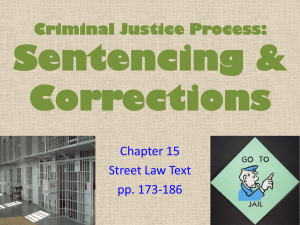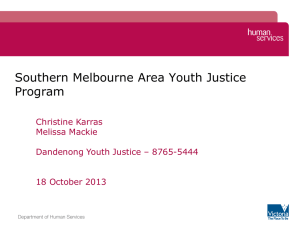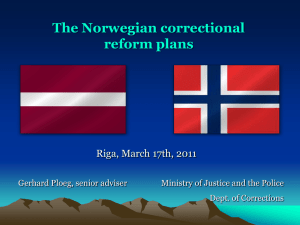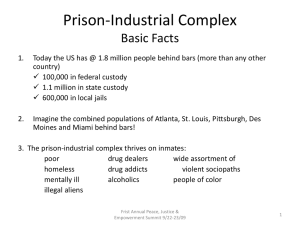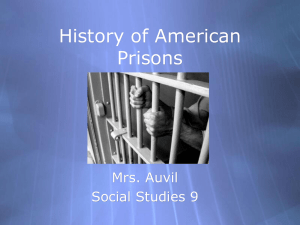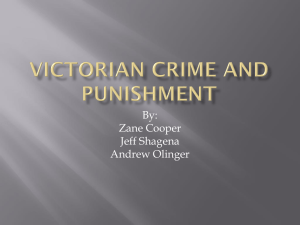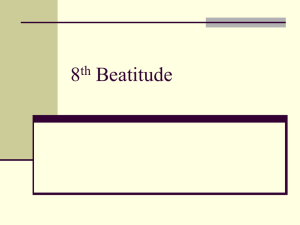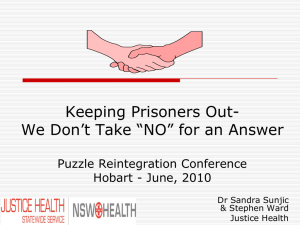Dollars and Detainees: The Growth of For
advertisement
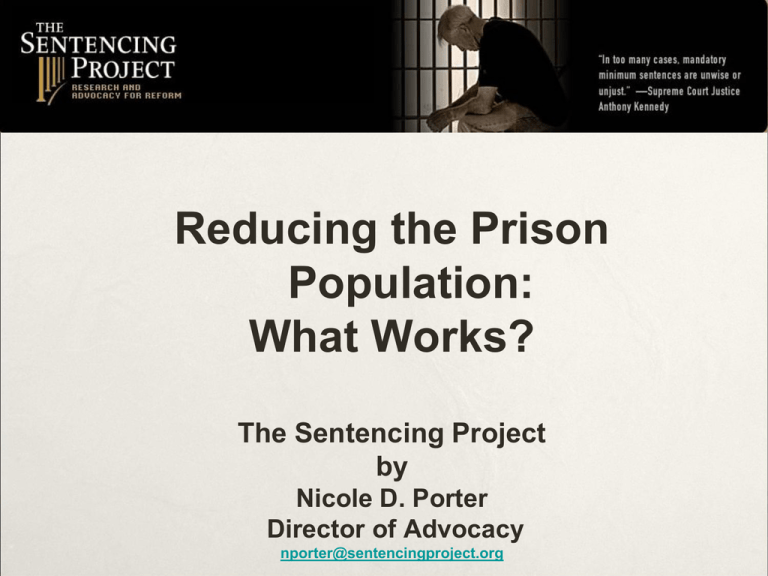
Reducing the Prison Population: What Works? The Sentencing Project by Nicole D. Porter Director of Advocacy nporter@sentencingproject.org Trends in State Prison Population Changes in State Policy Prison Closures Conclusion & Recommendations Discussion/Q&A STATE PRISON POPULATION, BY OFFENSE, 2010 Prisons Can Be Costly Are there more cost effective ways to ensure public safety? DOC reports spending $1.3 billion a year on corrections. Vera Inst. of Justice reports: FISCAL YEAR 2010: Wisconsin Department of Corrections (DOC) had $800.3 million in prison expenditures. The state also had $74.1 million in prison-related costs outside the department’s budget. Total cost of Wisconsin’s prisons—to incarcerate an average daily population of 23,015—was therefore $874.4 million,. The state spends on average $37,994 in average annual cost per Source: Vera Institute of Justice incarcerated person Incarceration Rates have Challenged Stakeholders Red States and Blue States have adopted policy change to control state prison populations: ranging from Texas to New York State policymakers have committed to reducing rates of incarceration Policy can frame the Debate: Vermont set a goal of reducing the average rate of detainees to 300 per 100,000 after observing rising rates between 2008 and 2010. Stakeholders include: the court administrator, the administrative judge of the trial courts, the commissioner of the department of corrections, the executive director of the department of state’s attorneys and sheriffs, and the public defender. This goal was codified into statute in 2010. Trends in State Policy •2000-2008 the number of people incarcerated in state prisons rose by 12% from 1,176,269 to 1,320,145, although with a broad variation around the nation. •At the high end, six states expanded their prison populations by more than 40 percent – West Virginia, Minnesota, Arizona, Kentucky, Florida, and Indiana. Minnesota (low compared to other states): Increased during early 2000s due to sentences for meth & DWI offenses. Growth slowed starting in 2007 due to modest changes. •Prison populations declined modestly in 25 states in 2010. •Total prison population declined for the first time since 1972. •Despite recent trends it’s important to note the continued scale of incarceration in this Changes in State Policy & Practice Prison Population: function of several factors that include what triggers a prison sentence and length of confinement In recent years states targeting efforts to control state prison populations have looked at several policy issues that include: •Sentencing Reforms •Alternatives for “Prison Bound” People •Reducing Time Served in Prison •Managing Parole Release Rates •Reducing Probation/Parole Revocations. Sentencing Reforms New York: Scaled back the Rockefeller Drug Laws substantially to reduce the scope of mandatory sentences Michigan: Reformed the “650 Lifer Law” that had previously imposed life sentences for 650 gram drug offenses, even for first-time offenders. Eliminated most mandatory minimum sentences for drug offenses and incorporated sentencing provisions into the guidelines system, with enhanced judicial discretion. Kansas: Amended state sentencing guidelines to divert people convicted of drug possession to mandatory treatment rather than prison, and eliminated sentencing enhancements for persons with prior convictions for drug possession. Texas: Granted prosecutors the discretion to charge certain state jail felonies as misdemeanors Changes in Policy produce Results. NY: Reducing Drug Offenders Sentenced to Prison Alternatives for Prison Bound People New York: Drug Treatment Alternatives to Prison program established by the Brooklyn District Attorney’s Office to divert prison-bound defendants into treatment programs to help reduce the use of incarceration; later expanded to other prosecutor’s offices statewide. New Jersey: Attorney General revised plea negotiation guidelines to permit “open pleas” in lower-level drug-free zone cases, giving judges discretion at sentencing. Reducing Time Served in Prison New York: Implemented “merit time” credits and other incentives for participation in educational and vocational training, treatment and other services to speed up parole consideration Mississippi: Authorized parole for persons convicted of nonviolent offenses after June 30, 1995 who served a portion of their sentence. State lawmakers also removed nonviolent offenses from “truth in sentencing” provisions. Indiana: Authorized discharge for long term prisoners who have served at least 21 years and received 4 years of earned time credit for certain rehabilitation programs Colorado: Established presumptive parole for inmates who reached their parole eligibility date and whose controlling sentence is felony drug possession or use offense Community Investment to reduce Recidivism Controlling prison populations must work hand-in-hand with strengthening community networks to reduce recidivism Opportunity for partnership with various stakeholders: correctional officials, business leaders, faith leaders, and others States have institutionalized systems to address strengthening successful reentry efforts for persons exiting prison Ohio – community based reentry councils Michigan and Texas – requires reentry plans for each exiting inmate (e.g. housing, job search, etc.) Minnesota, Connecticut, North Carolina, Ohio – adopted policies that strengthen job opportunities for persons with prior convictions to reduce recidivism Parole Release Rates New Jersey: Adopted Risk assessment instruments to aid parole board in considering release issues Michigan: Use of data-driven policies to identify lower-risk cases for release, establishment of greater range of intermediate sanctions for rule violators, and the designation of two “reentry prisons” to assist in planning for release. Kentucky: Amended parole release policies and expanded home incarceration for persons convicted of certain offenses Reducing Revocations New Jersey: Established Regional Assessment Centers to provide input to parole board in determining if parole violators should be allowed to continue to parole supervision. Michigan: Established the Michigan Prisoner Reentry Initiative to develop locally-based planning focusing on services in housing, employment, substance abuse, and other areas designed to increase prospects for successful reentry. California and Arizona: Established a funding mechanism to reward counties that succeed in reducing the rate of adult probationers sent to prison; funding allocation based on costs avoided by the state through reduced revocations. Prison Closures * Changes in policy can reduce demand for costly prisons *Key way to reduce state costs is through reforms that can lead to downscaling state prison capacity *Achieved in several ways from prison closures to scaling back capacity at targeted facilities *2011: at least 13 states have closed or downscaled correctional facilities reducing prison capacity by over 15,500 beds *States included: Texas, New York, Michigan, and North Carolina *2012: at least 6 states have announced prison closures including Illinois, Florida, and Kentucky– which may reduce state prison capacity by over 13,000 beds Conclusion/Recommendations Reducing the State Incarceration Rate is Possible Policy change can be achieved through legislative and administrative reforms Reducing the state prison population is a moral issue that can save Wisconsin money

